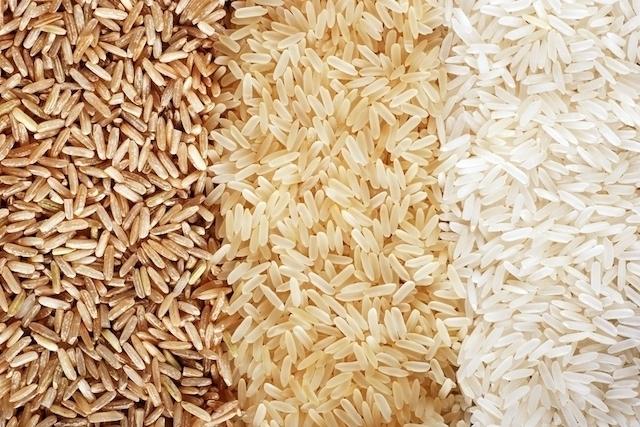
The grain of cereal contains most of the substances on the outer surface, precisely the one that is eliminated by bleaching. What remains after this process is only the internal part, mainly starches that without external substances (such as mineral salts) become an excessive concentration of sugars. Suffice it to say that the glycemic index of whole grains is 50 while that of 'whites' is 70, much higher.
Whole grains are rich in vitamins, minerals and amino acids essential for life. Let us now focus on this last aspect and make a comparison between brown and white rice to see how the wealth of amino acids present in the grain varies. Recall that these substances are used to build human proteins, essential for a myriad of metabolic processes, and without which survival is not possible. We therefore understand the need to supply the right amount of essential amino acids every day.
Here are the main ones:
- Histidine: necessary to form glycogen (the sugar reserve) in the liver, manages the formation of mucus (an important immune defense) and is a component of hemoglobin and sperm. It is essential in infants and uremia. Brown rice contains 1,6mg per hectogram, white rice 0,4mg.
- Isoleucine: regulates the thymus, spleen, pituitary gland, hemoglobin and metabolism. Brown rice (5,7), white (5,2).
- Leucine: balances the Isoleucine. Brown rice (9,5), white (6,3).
- Lysine: it is part of the composition of the liver, of the gallbladder, it intervenes in the metabolism of fats, in the regulation of the mammary and pineal glands, of the ovaries; prevents cell degeneration. Brown rice (3,2), white (0).
- Methionine: constituent of hemoglobin, tissues and serum; regulator of the functions of the spleen, pancreas and lymph. Brown rice (2,2), white (0).
- Phenylalanine: eliminates waste materials, regulates kidney and bladder functions. Brown rice (5,3), white (2,4).
- Threonine: allows the exchange of amino acids in the body. Brown rice (3,9), white (0).
- Tryptophan: Generates cells and tissues, gastric and pancreatic juices, benefits the optical system. Brown rice (1,4), white (0).
- Arginine - tones the muscles; it is a cartilage constituent; benefits the organs of reproduction and controls cellular degeneration. Regulates detoxification processes. Brown rice (7,7), white (2,3).
Overall, about 100g. of brown rice we have 40,5mg of essential amino acids, against 16,6mg. of white rice.
Here are the other properties. Compared to white rice, brown rice contains:
- Double the phosphorus,
- Double the manganese,
- More than double the iron,
- Triple the vitamin B3,
- Four times the vitamin B1,
- Ten times more vitamin B6,
- Triple the amount of vitamin E,
- Double the potassium,
- One and a half times of selenium and zinc.
Read also How to replace white rice at the table >>
Discover all the properties, uses and benefits of brown rice
Manganese is essential for the production of energy, for the release of hormones and for its antioxidant properties. Its high fiber and selenium content reduces the risk of intestinal diseases. The phytonutrients that compose it are useful for the prevention of heart and degenerative diseases.
Thanks to all these properties, brown rice is considered excellent in case of renal insufficiency and obesity, since promotes metabolic functions. It is also a valuable aid to keep blood pressure and cholesterol under control. Thanks to its starch content, it is an easily digestible and assimilable food even by people suffering from food intolerance. The skin that covers the grain is instead rich in fiber which benefits the intestine and also seems to be able to counteract the formation of intestinal polyps. On the other hand, it is important to underline that the white rice that we commonly find on sale is brushed with talc and glucose and subsequently made shiny with seed oil and paraffin; well, talc contains a substance, magnesium silicate, which seems to have carcinogenic activity, while paraffin seems to be able to damage the gastric mucosa, especially in children and the elderly.
A single recommendation: precisely because it is whole and alive, it has a shorter duration than the white one and can go rancid over time, so it is advisable to keep it vacuum-packed or cool. The cooking takes about 45 '- 1 hour and should be chewed well because it always remains a little al dente. Some simple recipes: brown rice can be eaten with pumpkin, nettles, peas, lentils, spontaneous spring herbs.


























